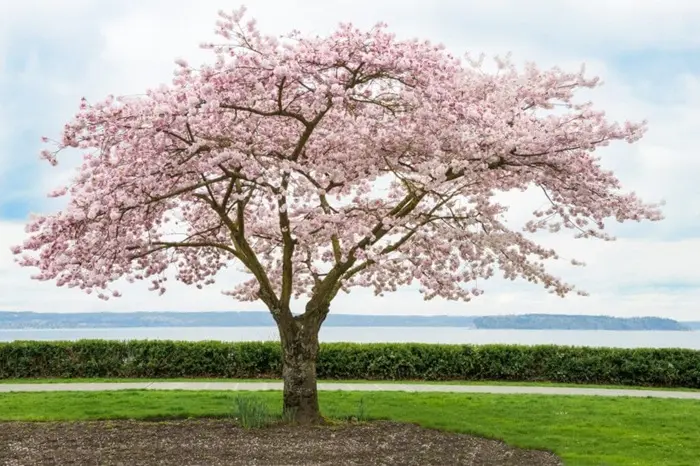Fig trees, known for their broad leaves and succulent fruit, have been a symbol of many things throughout history. These trees are deeply embedded in various cultures, religions, and artistic expressions. This article explores the symbolism, meaning, and significance of fig trees across different contexts. We will delve into their symbolism, their meaning in different colors, their biblical significance, as well as their representation in tattoos, love, and death.
Fig Trees Symbolism
Historical Symbolism
Fig trees have been a symbol of abundance, fertility, and prosperity for thousands of years. In many ancient cultures, they were revered for their ability to produce fruit multiple times a year, making them a symbol of fertility and the continuation of life. The fig tree’s ability to thrive in harsh conditions also made it a symbol of endurance and resilience.
In ancient Egypt, fig trees were associated with the tree of life and were believed to be the home of gods and goddesses. The Egyptians saw the fig tree as a divine symbol of abundance and life. In Greek mythology, the fig tree is associated with Demeter, the goddess of agriculture and fertility. The Greeks considered the fig tree to be sacred and a symbol of peace and prosperity.
Cultural Symbolism
In many cultures, fig trees symbolize unity and peace. The large, shady canopy of the fig tree invites people to gather beneath its branches, making it a symbol of community and togetherness. This symbolism is particularly strong in the Mediterranean region, where fig trees are common and often found in central places in villages.
In India, the fig tree, known as the Banyan tree, is considered sacred. It is a symbol of immortality and longevity due to its long life span and its ability to grow new roots from its branches, symbolizing the continuity of life. The fig tree is also associated with spiritual enlightenment, as it is believed that Buddha attained enlightenment under a fig tree.
Fig Trees Meaning
Spiritual Meaning
Fig trees carry a deep spiritual meaning in many cultures. They are often seen as a connection between the earthly and the divine. The tree’s roots in the ground and branches reaching toward the sky symbolize the connection between the material and spiritual worlds. This duality makes the fig tree a powerful symbol of balance and harmony.
In some spiritual traditions, the fig tree represents the human condition—rooted in the physical world but reaching for spiritual enlightenment. The fruit of the fig tree, often hidden behind large leaves, symbolizes the hidden truths and mysteries of life. The act of uncovering the fruit represents the search for knowledge and wisdom.
Personal Meaning
On a personal level, fig trees can symbolize growth, strength, and protection. Just as the fig tree provides shelter and nourishment, it can represent the support and care we receive from those around us. The tree’s ability to regenerate and thrive even in difficult conditions can serve as a symbol of personal resilience and the ability to overcome adversity.
For many, the fig tree is a symbol of personal growth and the journey toward self-discovery. The process of cultivating a fig tree, with its need for care and attention, can be seen as a metaphor for personal development. The fruit of the fig tree, which takes time to mature, symbolizes the rewards of patience and perseverance.
Fig Trees Color Meaning
Green Fig Trees
Green fig trees are symbols of growth, renewal, and vitality. The green leaves of the fig tree represent new beginnings and the flourishing of life. Green fig trees are often associated with the start of a new chapter in life, whether it’s a new relationship, a new job, or a new personal project.
The color green in fig trees also symbolizes healing and rejuvenation. Just as the fig tree can thrive in challenging conditions, it can symbolize the healing process and the return to health after illness or hardship. Green fig trees are often seen as a positive and hopeful symbol, representing the promise of new life and new opportunities.
Brown Fig Trees
Brown fig trees, with their earthy tones, symbolize stability, grounding, and endurance. The brown bark of the fig tree represents the strength and resilience needed to weather life’s challenges. Brown fig trees are often associated with a deep connection to the earth and a strong sense of rootedness.
The color brown in fig trees also symbolizes wisdom and maturity. Just as the fig tree grows stronger and more robust with age, brown fig trees can represent the accumulation of life experiences and the wisdom that comes with time. Brown fig trees are a symbol of enduring strength and the ability to remain grounded even in the face of adversity.
Purple Fig Trees
Purple fig trees are a symbol of mystery, spirituality, and transformation. The deep, rich color of purple is often associated with the unknown and the mystical. Purple fig trees can represent the mysteries of life and the pursuit of spiritual enlightenment.
The color purple in fig trees also symbolizes transformation and change. Just as the fig tree goes through cycles of growth, shedding leaves and bearing fruit, purple fig trees can represent the cycles of life and the changes that come with them. Purple fig trees are a symbol of spiritual growth and the journey toward self-discovery.
Fig Trees Meaning in the Bible
Biblical Significance
Fig trees hold significant meaning in the Bible, often symbolizing prosperity, security, and divine judgment. In the Old Testament, the fig tree is frequently mentioned as a symbol of abundance and peace. For example, in the Book of Micah, the fig tree is used as a metaphor for a time of peace when “everyone will sit under their own vine and under their own fig tree, and no one will make them afraid” (Micah 4:4). This imagery reflects the fig tree’s association with prosperity and security.
Fig Tree in the New Testament
In the New Testament, the fig tree takes on a more complex symbolism. It is often associated with judgment and the consequences of spiritual barrenness. In the Gospel of Matthew, Jesus curses a barren fig tree, causing it to wither and die (Matthew 21:18-19). This act is often interpreted as a symbol of divine judgment against those who fail to bear spiritual fruit.
The fig tree is also mentioned in the Parable of the Fig Tree in the Gospel of Luke, where it symbolizes the importance of repentance and spiritual readiness (Luke 13:6-9). The fig tree’s fruitfulness is seen as a metaphor for spiritual productivity and the consequences of failing to live a righteous life.
Symbol of Israel
In some interpretations, the fig tree is also seen as a symbol of Israel. In the Old Testament, the fig tree is often used as a metaphor for the nation of Israel, representing its prosperity, but also its spiritual barrenness. The cursing of the fig tree by Jesus is sometimes interpreted as a symbolic act of judgment against Israel for its failure to recognize the coming of the Messiah.
See Also:What Does A Dahlia Flower Symbolize?
Fig Trees Meaning in Tattoos
Symbol of Growth and Resilience
Fig trees are a popular choice for tattoos due to their rich symbolism of growth, resilience, and personal development. A fig tree tattoo can represent the wearer’s journey of self-discovery and personal growth. Just as the fig tree thrives in challenging conditions, a fig tree tattoo can symbolize the wearer’s ability to overcome obstacles and grow stronger through adversity.
Symbol of Abundance and Prosperity
A fig tree tattoo can also symbolize abundance and prosperity. The fig tree’s ability to bear fruit multiple times a year makes it a powerful symbol of fertility and abundance. A fig tree tattoo can represent the wearer’s desire for prosperity and success in their personal and professional life.
Spiritual Symbolism
For those with a spiritual inclination, a fig tree tattoo can represent the connection between the material and spiritual worlds. The fig tree’s roots in the ground and branches reaching toward the sky make it a symbol of balance and harmony. A fig tree tattoo can symbolize the wearer’s spiritual journey and their desire to achieve balance and harmony in their life.
Fig Trees Meaning in Love
Symbol of Fertility and Fruitfulness
In the context of love, fig trees are often seen as a symbol of fertility and fruitfulness. The fig tree’s ability to produce fruit multiple times a year makes it a powerful symbol of fertility and the continuation of life. In many cultures, fig trees are associated with marriage and the creation of new life.
In some traditions, fig trees are planted as a symbol of a couple’s love and commitment to each other. The fig tree’s deep roots and strong trunk represent the strength and stability of the relationship, while the fruit symbolizes the couple’s ability to create and nurture new life together.
Symbol of Protection and Security
Fig trees are also seen as a symbol of protection and security in love. The large, shady canopy of the fig tree provides shelter and protection from the elements, making it a symbol of safety and security in a relationship. A fig tree in a romantic context can represent the protective and nurturing qualities of love.
In some cultures, fig trees are believed to have protective properties, guarding against negative energy and harmful influences. This symbolism extends to relationships, where the fig tree can represent the protective and nurturing aspects of love, providing a safe and secure environment for the relationship to thrive.
Fig Trees Meaning in Death
Symbol of the Cycle of Life and Death
Fig trees are often seen as a symbol of the cycle of life and death. The fig tree’s seasonal shedding of leaves and bearing of fruit represents the natural cycle of life, death, and rebirth. In many cultures, the fig tree is associated with the transition from life to death and the continuation of life after death.
In some traditions, fig trees are planted in memory of the deceased, symbolizing the continuation of life after death. The fig tree’s ability to regenerate and grow new leaves and fruit after a period of dormancy makes it a powerful symbol of the eternal cycle of life and death.
Symbol of Legacy and Remembrance
Fig trees are also seen as a symbol of legacy and remembrance in the context of death. Just as a fig tree can live for many years and bear fruit for generations, it can represent the lasting legacy of the deceased. Planting a fig tree in memory of a loved one can symbolize the continuation of their life and legacy through future generations.
In some cultures, fig trees are associated with the spirits of the deceased, believed to reside in the tree and watch over the living. The fig tree can thus symbolize the presence of the deceased in the lives of their loved ones, providing comfort and protection from beyond the grave.
Conclusion
Fig trees are rich in symbolism and meaning across different cultures, religions, and personal contexts. From their representation of fertility and abundance to their spiritual significance and association with the cycle of life and death, fig trees hold a profound place in human history and culture. Whether seen as a symbol of personal growth, protection in love, or the continuation of life after death, the fig tree remains a powerful and enduring symbol that resonates with people around the world.
Related topics:













